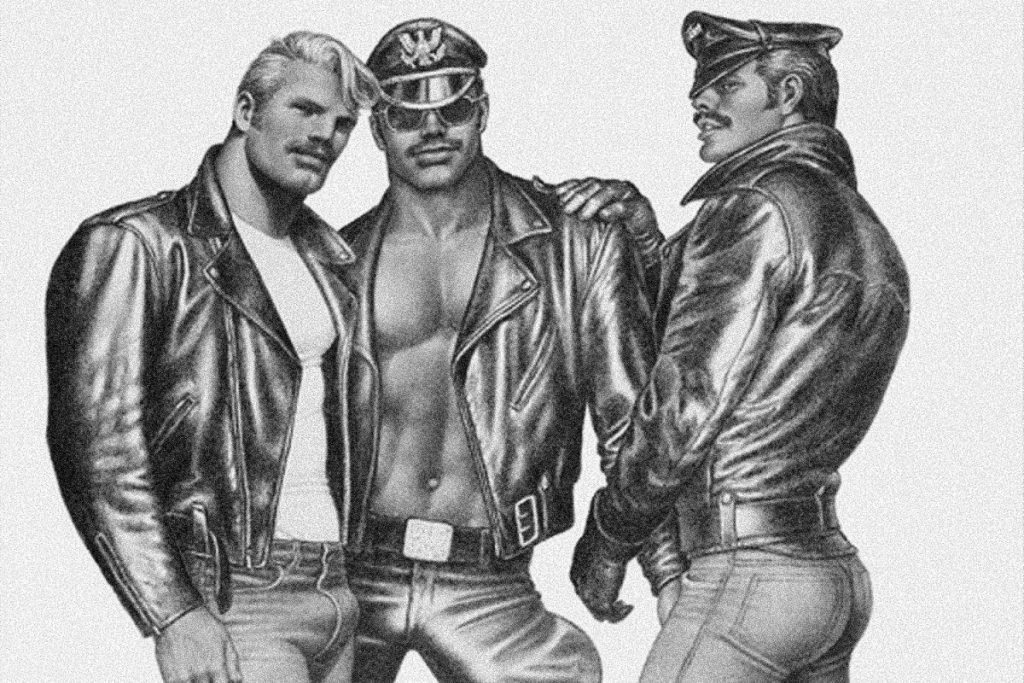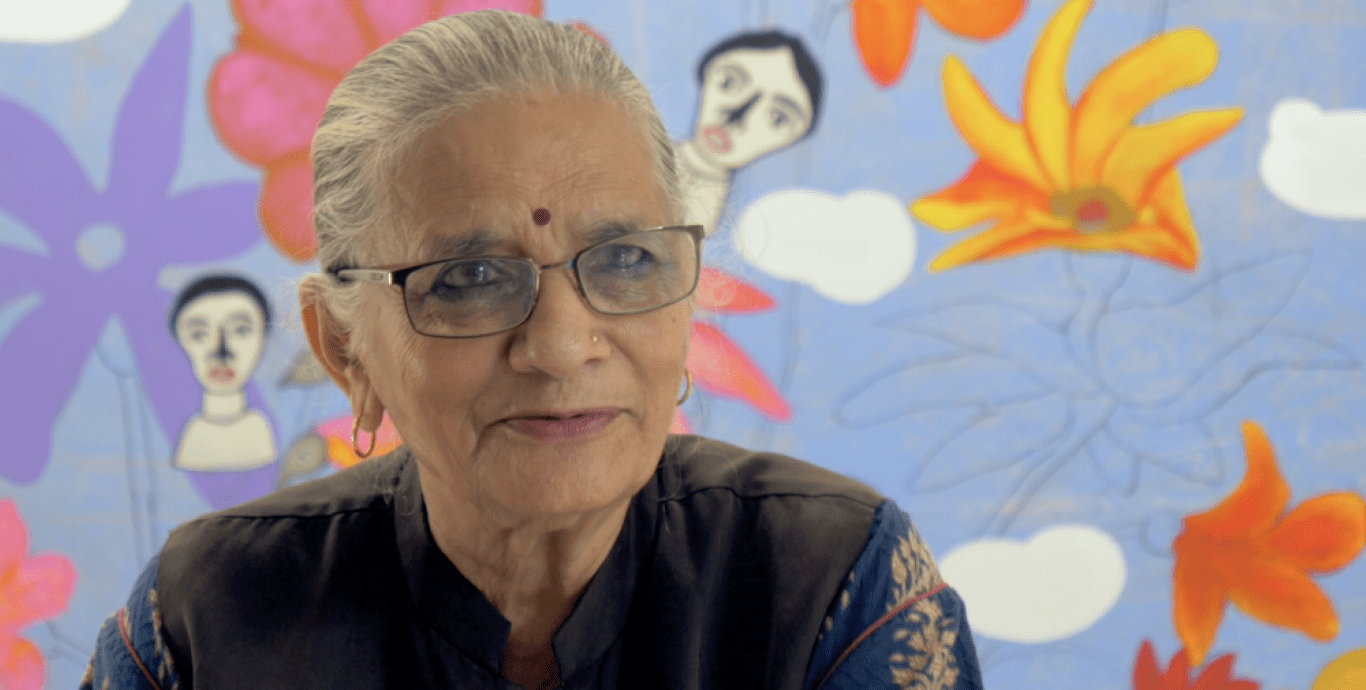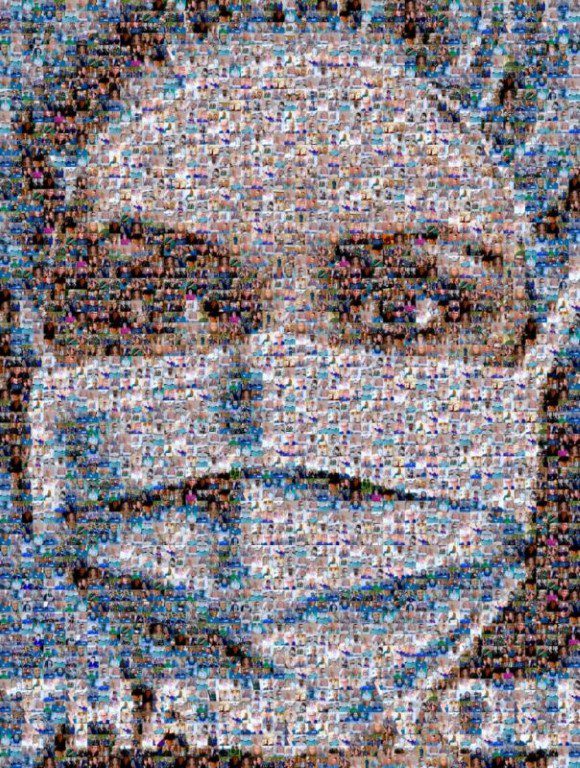We are familiar with the proverb, “All work and no play makes Jack a dull boy”. And it certainly holds true. The word “play” may take a plethora of forms. And no artist knows it better than Touko Valio Laaksonen, better remembered by his pseudonym, ‘Tom of Finland’. Tom of Finland is both the artist and his protagonist’s aspirational effigy. At a time when homosexual men were considered an abomination and homoerotic proclivities & same-sex attractions were considered uncouth, he became the champion of queer art and sexual liberation.
Laaksonen was born in 1920 in Kaarina, Finland. He shifted to Helsinki to study advertising. There, he discovered his skills with the pencil and an appreciation of the male anatomy. While Finland was at war against the USSR, in what is commonly termed as the Winter War, he was conscripted into the Finnish Army. Later he found himself climbing the ranks amidst World War II.

No wonder he was obsessed with the male figure as is evident in his oeuvre. However, one may quickly notice a shift in the portrayal of his subjects. Sure, he essentially exclusively drew men but there was a significant shift in class from the time he learnt to doodle till his death. When Laaksonen was grappled with the musings of his youth, his artistic ventures focused on the working class of Kaarina and Turku. Labourers, masons, and vendors were some of the protagonists he was keen to explore and whom he indeed explored.
By 1939, he enlisted in the army and was mesmerised by the anonymity and appeal of the uniform. It was a testament to the subtle assimilation of his identity into the army. His experience in the barracks and camps informed this new period of sexual liberation. It went even as far as he could only think about the beauty of the form, without any connotations attached to it. Only he can make the Nazis look worth drooling over.
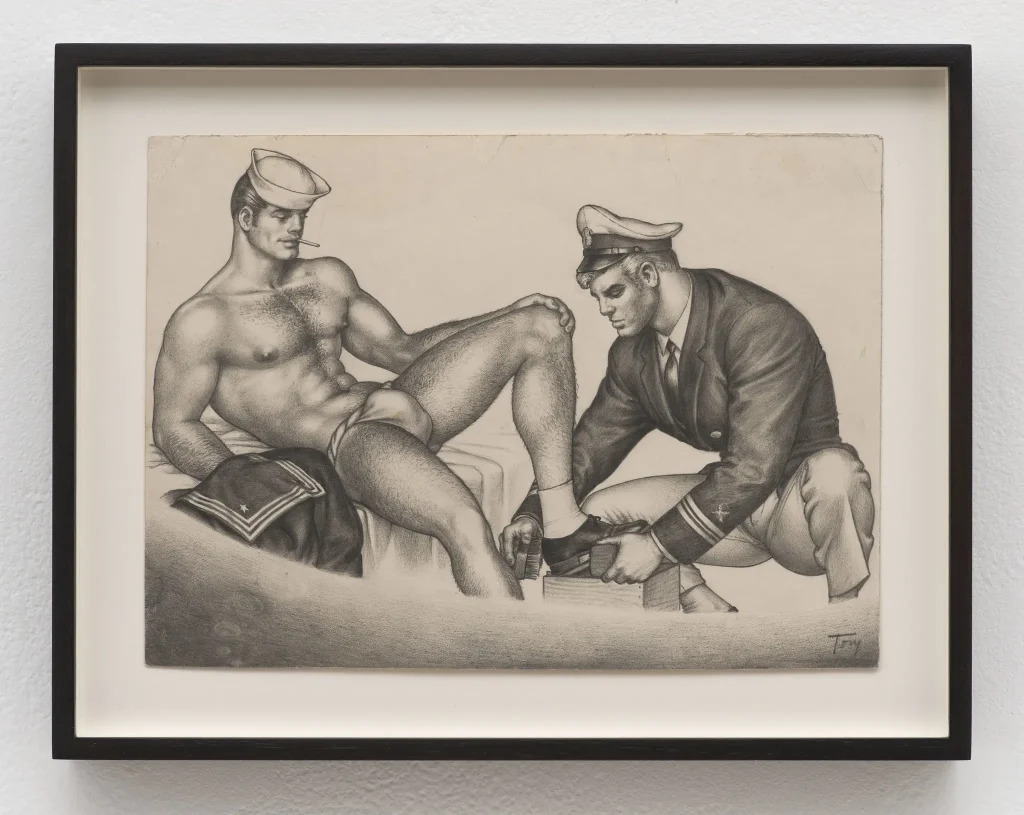
Laaksonen has mostly been idolized for bringing virile queerness and sexual passion to the mainstream. However, his career has not escaped controversy. During WWII, his drawings focused on the uniforms. Not only did it include his compatriots, but they also romanticised the ruthless Nazi soldiers. Against this criticism, Laaksonen likened the uniform to merely a veil clouding the unexplored.
His service concluded in 1945, and he returned to his studies. This post-WWII period saw a shift of style in his artwork. It was reminiscent of the upcoming biker subculture. The war had jilted many who refused to be bound by the conformity and monotony that came with the supposed normal lives. It also affected the portrayal of masculinity.
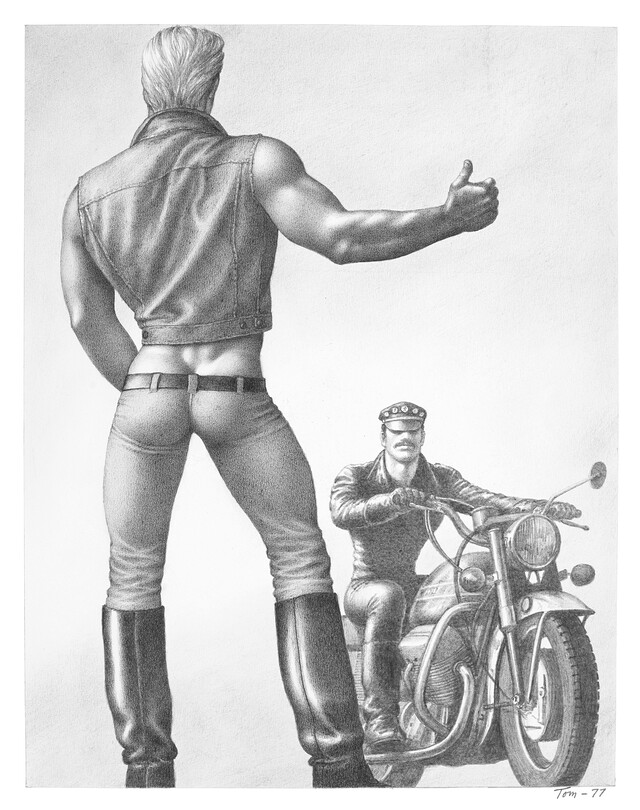
40 x 31.2 cm
Courtesy – Galerie Judin, Berlin Highlevel, Berlin
In some senses, masculinity became more toxic while the representation of queerness expanded. Masculinity or rather men in Laaksonen’s art denotes a sense of rebelliousness and provokes a lust towards danger. His subjects became more muscular and donned leather, latex, and chains. It reflected an uncaged man and his carnal desires.
Rugged masculinity has always been attached to the professions of sailors, bikers, soldiers, and construction workers. These were predominately heteronormative domains. The recurring idea of a gay male as a simple ‘pansy’ was about to be dismantled. Attaching these tropes to his subjects shook up the notion of heterosexuality. This heterosexuality was as sacred to the ‘straights’ as patriotism. Therefore, Laaksonen’s drawings almost felt like a betrayal to them, albeit a comical situation to the queers.
The conservative times saw queer and homosexual men as a conduit of passiveness and stereotyped femininity, an image which was demolished through his work. It also had the opposite effect, where effeminate men became a vassal to the boisterous men, effectively marginalising them yet again.
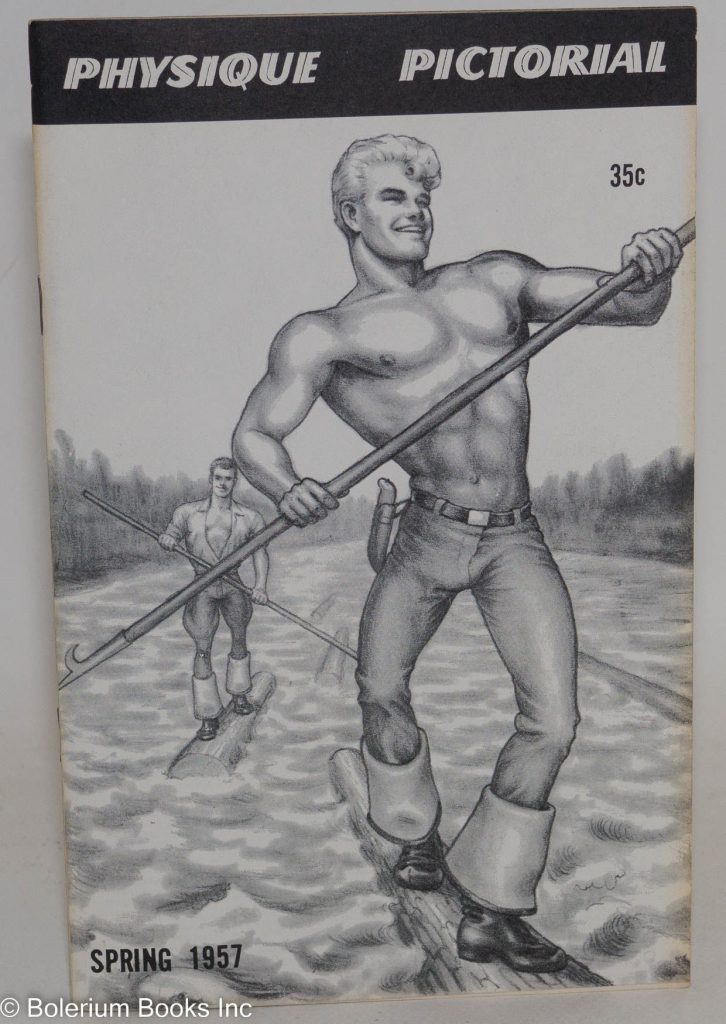
Before entering the army, he had destroyed dozens of paintings. It is assumed to have something to do with eradicating ties with his queer persona. However, the war’s conclusion ignited his passion once again and he relinquished the lingering residue of self-intenalised queerphobia. His first brush with fame came when his musings got published in the American beefcake magazine Physique Pictorial. Soon, he graced the magazine covers, most notably in the 1957 Spring edition.
The extensive use of hyperbolic muscle in his work signified dominance and sadism. Despite these incorrect connotations, there was a softer side to the subjects. Clothes can be a precursor to first impressions. But at the end of the day, only one identity remains – an affectionate gay man. Seldom, the characters were entangled in an unformidable love story, exuberating a longing for flesh and romance.
Censorship has always belittled art, and his drawings were considered a bit too saucy. The 1950s US censorship codes dictated the same. Beefcake magazines were in fashion around the 1930s. These magazines depicted men in all their glory yet were confounded by the existing patriarchy. The models were often in athletic settings and poses. Although visibly a beacon of softcore homosexual pornography, they were categorised under the garb of physical fitness and health. These magazines were the only getaway for homosexual men to titillate their sexuality. Thus, they focused on queer men.
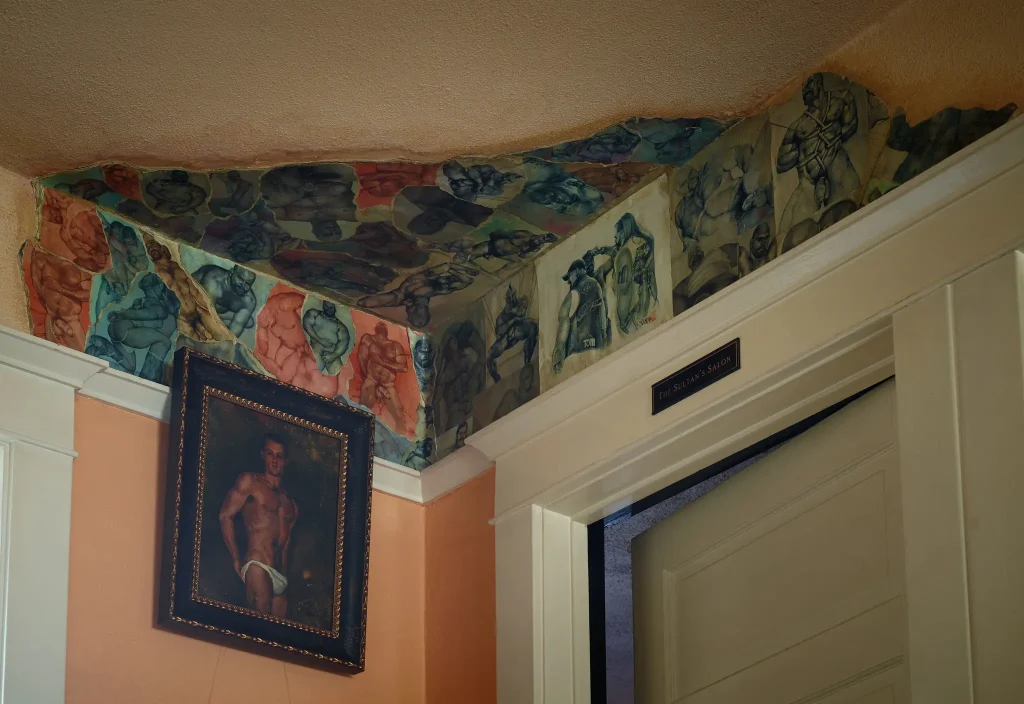
Often, his drawings were cropped to appease the censor board. However, it had a surprising effect on the readership, as the suspense kept the readers (most notably their queer population) gaping for more. To quench the ever-rising thirst, Laaksonen took it upon himself to send uncensored copies of the drawings worldwide to his patrons through a mail-order service. The business was a hit but remained commercially unsuccessful.
In 1962, the Supreme Court made a groundbreaking ruling in the case of MANual Enterprises v Day. The magazines featuring a collection of photographs or artwork, depicting nude or near-nude models would not legally be considered obscene anymore. Hitherto, it revolutionised print and motion pictures. Laaksonen’s popularity surged as he could explore his creative faculties and publish his explicit work without restrictions.
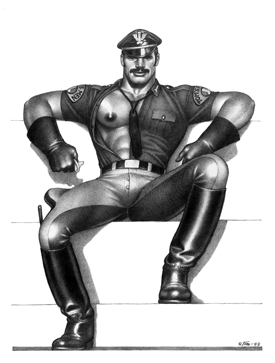
In 1968, he engendered the most popular character, ‘Kake’. Kake represented the softer side of attractions, longing and escape while keeping his roots stable with the discourses associated with the unruly and boisterous appearance and an average biker’s actions. Since his early childhood, he had depicted the members (pun intended) of the working class. These artworks, not unlike his later creations, were devoid of exotic settings. It renders a tinge of truth to them. Soon, he used the popular cruising environments – parks, public lavatories, and others as the setting. It was an authentic depiction of sexual exploration and liberation of the otherwise shunned community.
With the US Censorship standards reduced, Laaksonen focused on his art, leaving behind his life as an advertiser. He developed more artwork than before and also compiled comic books. Soon thereafter, he caught the attention of the mainstream, and his drawings were the centre of numerous exhibitions. It was also a period where his artwork underwent another significant shift. While his previous works were a figment of his imagination, his new work was photorealistic.
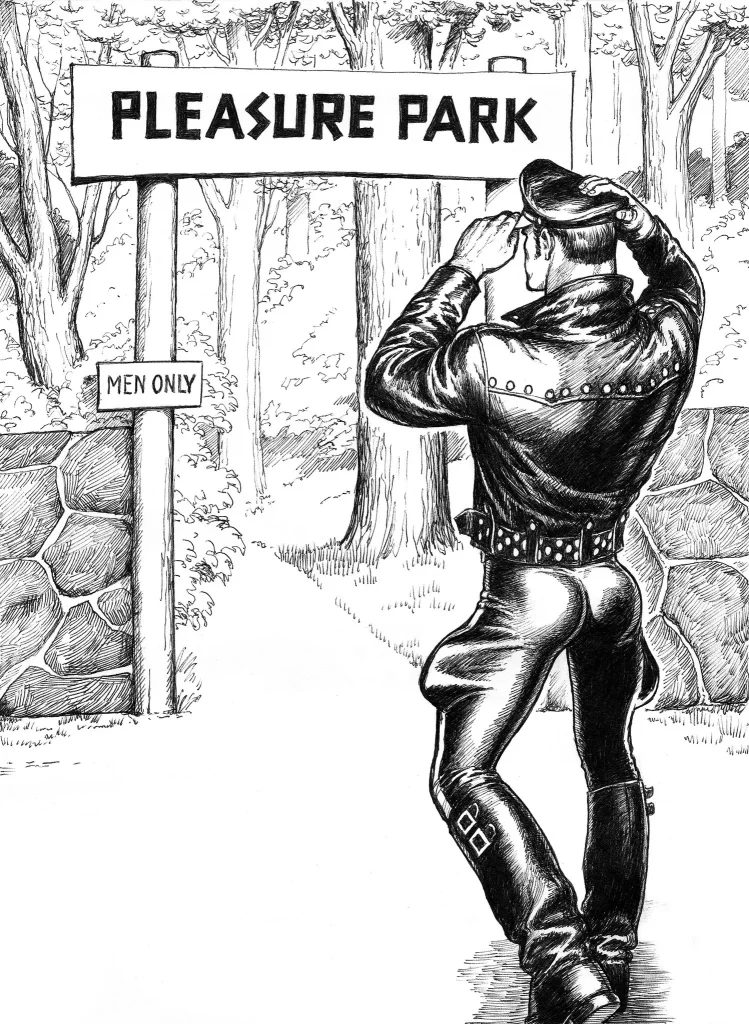
He considered the photographs a mere referential tool. These aids inspired him to carefully jot down the intricacies of male movements, postures, and gestures. In these drawings, he thrust in his idea of masculinity. The final product was a mix of realism and fantasy. The men were ornamented with leather and latex, with photorealistic poses, but their bodies were an outright homoerotic fantasy of the average Joe.
To an untrained eye devoid of context, the lifework of Laaksonen, simply put, is gay pornographic drawings. However, they are a catalyst of phallocentric discourse. The depiction of phallus is comical yet desirable. One would notice that the male member is exaggerated and enlarged beyond one’s wildest dream, making it a source of humour. For a typical gay man, the phallus denotes the object of desire, hence, their inclination towards it.
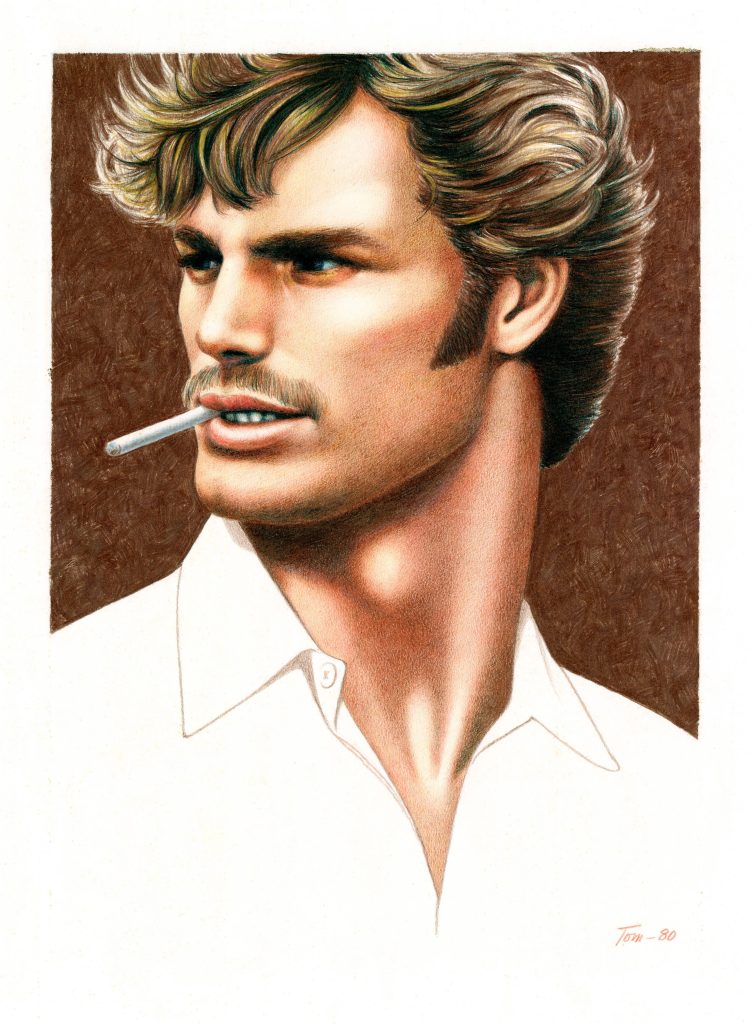
If we are to talk in contemporary terms, Tom of Finland has undoubtedly normalized fetish. It is said that Mapplethorpe and Laaksonen built up a beautiful friendship over their shared love of kinks. Seldom seen as a taboo, kinks are the window to an untapped treasure trove. These kinks came in clothing (leather, latex, chains) and the uncharted territory of BDSM. By the mid-1970s, he had inaugurated the Tom of Finland Company to curb the duplication of his now-copyrighted artwork. Soon, he established the Tom of Finland Foundation to preserve and exhibit his work to the fandom.
He was soon diagnosed with emphysema. It affected his ability to work with the pencil. Thus, he swapped it for pastel, marking the last shift in his technique. He died in 1991 of an emphysema-induced stroke.
His death in no way marks the end of his story. His oeuvre stood for an unabashed fight to be accepted into society, which in some ways operated on fear of the masculine, specifically the bikers. Numerous renowned galleries have showcased his artwork – Museum of Modern Art (MOMA), New York; Quentin Blake Centre for Illustration, London; Wäinö Aaltonen Museum of Art, Turku; The Museum of Contemporary Art (MOCA), Los Angeles; to name a few.
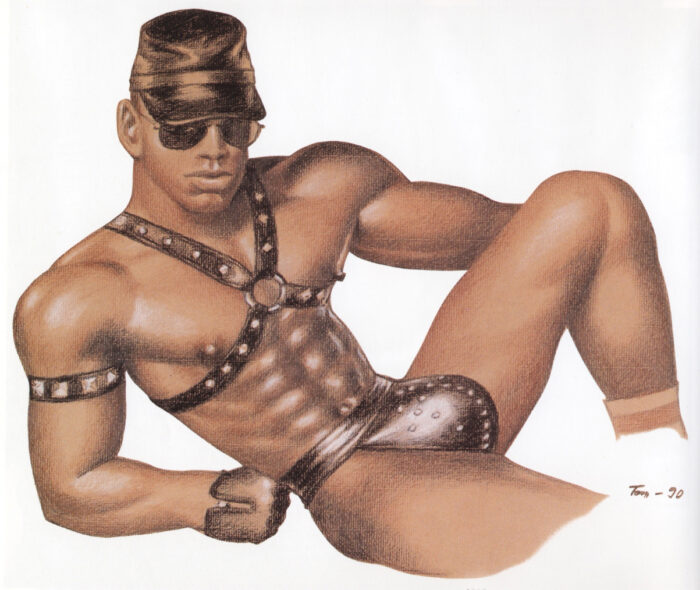
A worldwide show of his drawings extended his audience. Another debate ensued surrounding black bodies and the associated stereotypes. In a plethora of his artwork, he depicted the black body with an unusually large phallus. Suffice to say, that didn’t sit right. It drew a lot of criticism from the black community.

His foundation has also released a clothing line featuring replications of his artwork. He has been the subject of several documentaries and motion pictures. In 2014, the Finnish Postal Service, ‘Itella Posti’, immortalized his drawings when they featured his artwork in three first-class stamps. These stamps were quite popular, and orders flew in from nearly 178 countries.
Laaksonen is a celebrated auteur. While some might consider him a profane voyeur of the male body, he heralded queer celebration by subverting heteronormative artefacts. Without ‘Tom of Finland’, LGBTQIA+ sexual liberation might not be possible.
Photo Courtesy – Tom of Finland Foundation

Hi Ya’ll !!
I love writing about pop culture and all things queer.
Sub Editor at Abir Pothi

